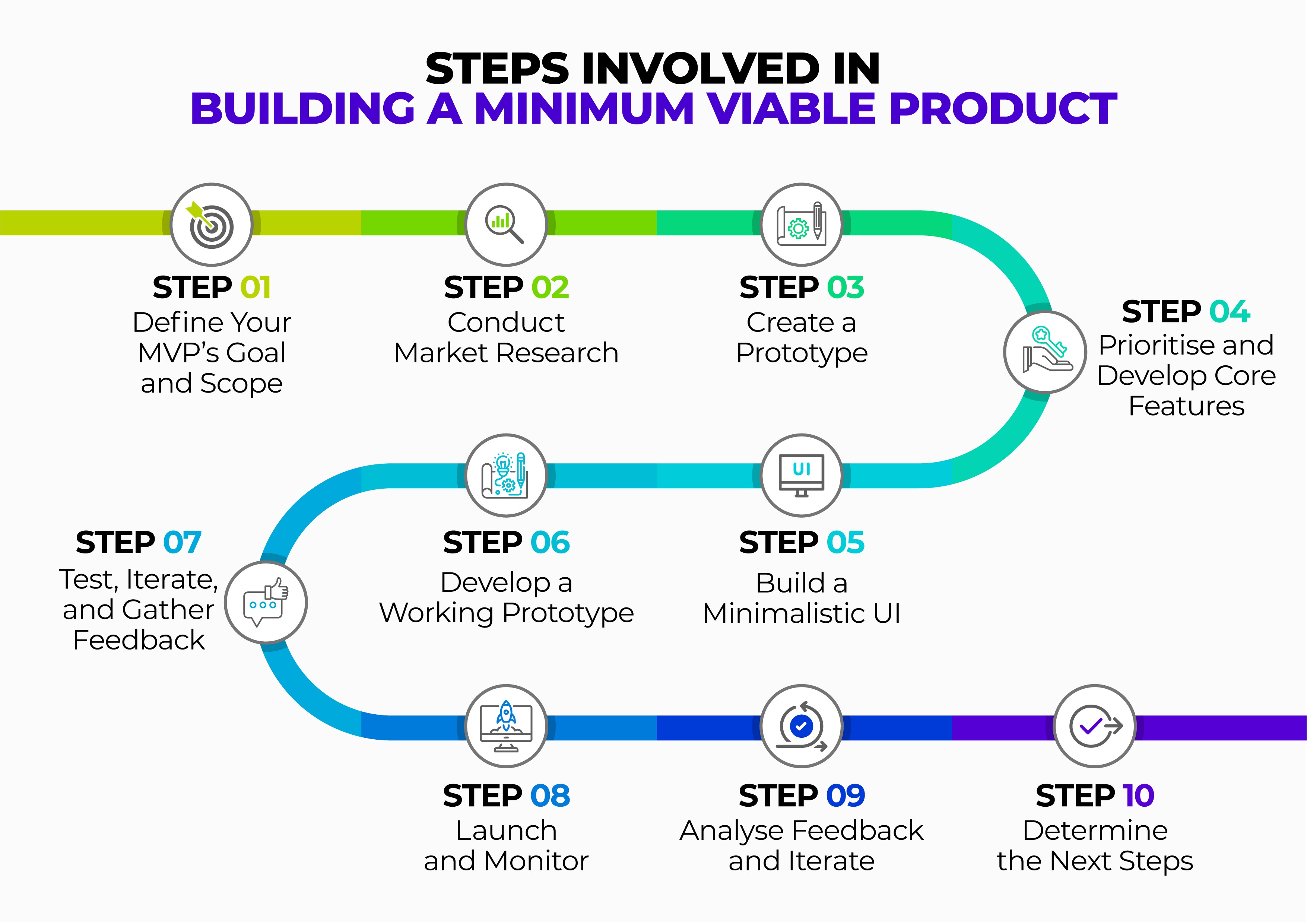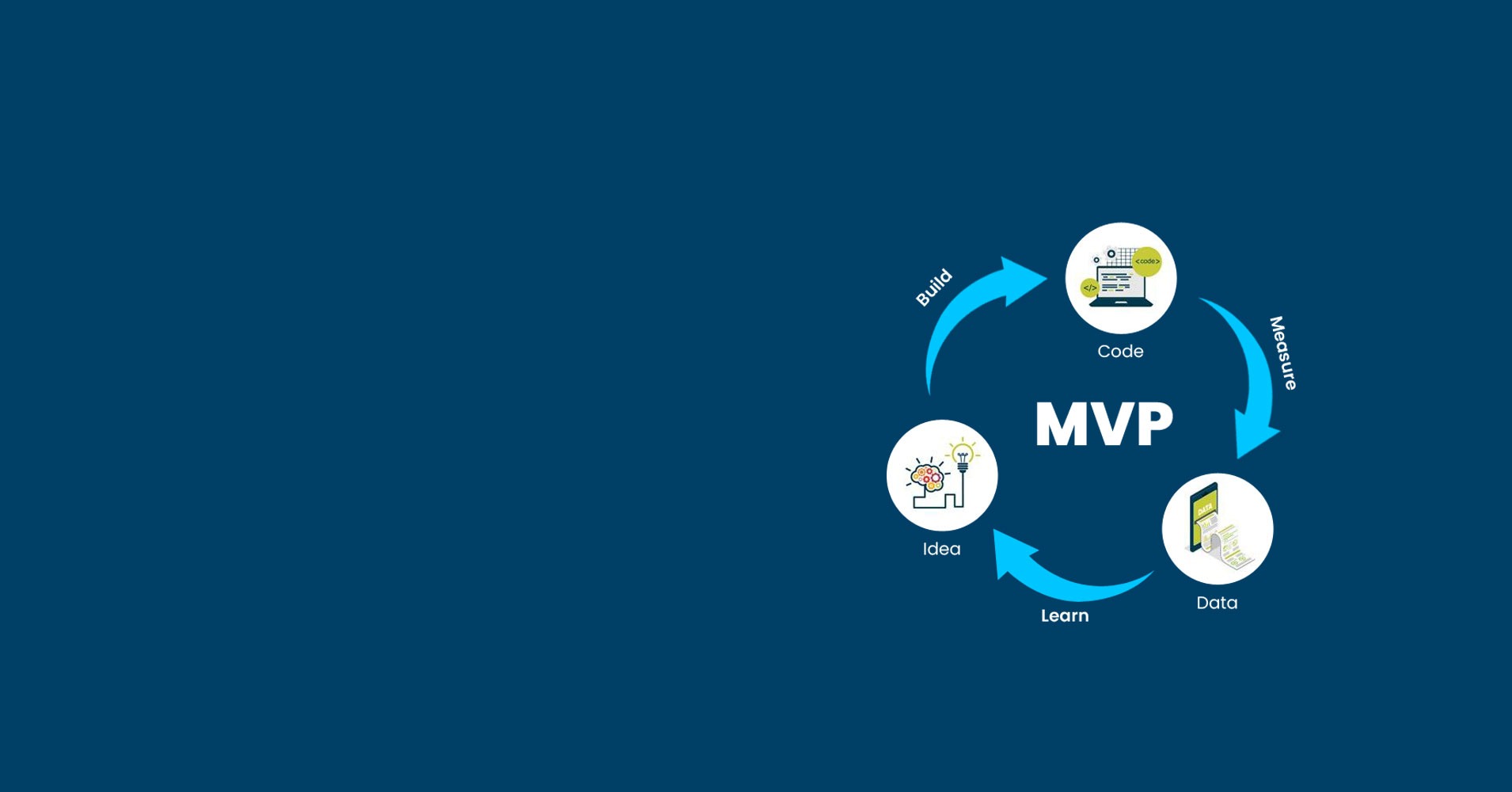Introduction
The modern business environment requires product ideas to be validated quickly and efficiently to compete effectively. That’s where building a Minimum Viable Product (MVP) comes into play.
An MVP allows for testing your concept, gathering user feedback, and making informed decisions before investing significant resources into a fully-featured product. In this comprehensive guide, we will take you through how to build an MVP and provide valuable insights along the way.

Understanding Minimum Viable Product
Before we delve into the nitty-gritty of building an MVP, it is essential to decoding that what is the purpose of a minimum viable product. The primary goal of an MVP is to validate your product idea with minimal effort and cost.
By releasing a stripped-down version of your product, you can gather valuable feedback from early adopters and potential customers. This feedback allows you to refine your product, identify pain points, and align it better with market needs.
Building an MVP
With a primary understanding of MVP, we now delve into the in-depth processes involved in building MVP.
Listed down below are the steps on how to build a minimum viable product.
Step 1: Define Your MVP’s Goal and Scope
The first step in building an MVP is clearly defining its goal and scope. Ask yourself, “What problem does my product solve, and what value does it offer to users?” This clarity will help you prioritize features and functionalities essential to achieving your MVP’s core purpose.
Step 2: Conduct Market Research
Thorough market research is crucial to understand your target audience, competition, and market trends. Identify your target market, analyze competitors’ offerings, and identify gaps your product can fill. This research will enable you to make informed decisions when defining your product’s unique selling points and positioning. It further clarifies how to build an MVP and their need and importance.
Step 3: Create a Prototype
With a clear goal, scope, and market understanding, it’s time to create a prototype. A prototype is a visual representation of your product’s key features and user flow. It helps you visualize the user experience and gather early feedback from stakeholders and potential users. Tools like Sketch, Figma, or Adobe XD can assist you in creating interactive and visually appealing prototypes.
Step 4: Prioritise and Develop Core Features
Based on your defined scope and prototype, prioritize the core features that align with your MVP’s goal. Remember, simplicity is vital. Develop only the features necessary to demonstrate your product’s value proposition. This approach ensures a faster development cycle and allows you to launch your MVP sooner.
Step 5: Build a Minimalistic UI
An MVP’s user interface (UI) should be clean, intuitive, and focused on the core functionality. Keep the design minimalistic and avoid unnecessary visual clutter. Tools like Bootstrap or Material-UI can assist you in quickly creating a visually appealing and responsive UI.
Step 6: Develop a Working Prototype
With clarity in mind about what is the purpose of a minimum viable product, now you can turn the prototype into a functional product. Use your chosen technology stack, whether it’s a web framework like Ruby on Rails or a mobile development framework like React Native, to build a working prototype. Focus on developing the core functionalities and ensuring a seamless user experience.
Step 7: Test, Iterate, and Gather Feedback
Once you have a working prototype, it’s crucial to test it rigorously and gather feedback from real users. Conduct usability testing sessions, collect user feedback, and iterate on your MVP based on the insights you gather. This iterative process will help you identify and address any usability issues, refine features, and enhance the overall user experience.
Step 8: Launch and Monitor
With your MVP refined and tested, it’s time to launch it to a broader audience. Deploy your MVP on a suitable hosting platform, such as AWS or Heroku, and implement analytics tools like Google Analytics to track user behavior and gather data. Monitor user engagement, retention rates, and other key metrics to assess the success of your MVP and identify areas for further improvement.
Step 9: Analyse Feedback and Iterate
As users interact with your MVP, carefully analyze the feedback and data you collect. Pay attention to user suggestions, pain points, and feature requests. Use this feedback to iterate on your product, adding new features, refining existing ones, and addressing any issues. The iterative nature of MVP development allows you to improve your product as per data from real user insights continuously.
Step 10: Determine the Next Steps
After gathering valuable feedback and iterating on your MVP, it’s time to evaluate the next steps. Assess the market response, user feedback, and business goals to decide whether to pivot, proceed with further development, or scale your product. The insights gained from your MVP will guide you in making informed decisions about the future direction of your product.
Optimum Direction of MVP
Refine and Enhance User Experience
A key aspect of building a successful MVP is providing a seamless and enjoyable user experience. Once you have a functional prototype, focus on refining the user interface and enhancing usability. Pay attention to factors such as intuitive navigation, clear call-to-action buttons, and responsive design to ensure that users can easily interact with your product.
Consider conducting user testing sessions to gather feedback on the user experience. Observe how users interact with your MVP, identify any usability issues or bottlenecks, and make necessary adjustments. This iterative process will help you create an intuitive and user-friendly MVP, leading to better user adoption and satisfaction.
Develop a Robust Backend Infrastructure
While an MVP may have a simplified feature set, it is crucial to build a robust backend infrastructure to support your product’s functionality and future scalability. This involves setting up databases, servers, APIs, and other necessary components to handle data storage, user authentication, and seamless integration with external services.
Choose a backend technology stack that aligns with your project requirements, such as Node.js, Ruby on Rails, or Django. Leverage cloud services like AWS or Google Cloud Platform to ensure scalability and reliability.
Consider Security and Data Privacy
As you develop your MVP, it’s important to prioritize security and data privacy. Make sure user data and sensitive information are protected with robust security measures. This includes encrypting data transmissions, securing user authentication, and following industry best practices for data storage.
Ensure compliance with relevant data protection regulations, depending on your target audience and geographical scope. Building a reputation for solid security and data privacy practices early on can help build trust with users and differentiate your product from competitors.
Plan for the Full-Scale Product
While an MVP serves as a valuable validation tool, it’s important to keep the broader vision of your full-scale product in mind. As your MVP gains traction and garners positive user feedback, start planning for the next phase of development—the full-scale product.
Collaborate closely with your development team, product managers, and stakeholders to define the scope and timeline for the full-scale product. Set clear goals and objectives, establish a realistic budget, and allocate resources accordingly. Leverage the insights and lessons learned from building the MVP to streamline the development process and ensure a successful transition to the full-scale product.
Build a Strong Development Team
To execute your vision for the full-scale product, it’s vital to have a skilled and dedicated development team in place. Consider hiring additional developers, designers, or product managers with experience building scalable, production-ready applications. Building a strong development team ensures your business has the necessary talent and resources to bring your full-scale product to life.
The Building Cost of an MVP
A common question that pops up in one’s head is sure – ‘how much does it cost to build an MVP?’
The cost of building an MVP varies depending on various factors, including how complex your product is, the number of features, and the development resources you choose. Hiring a dedicated development team or partnering with an experienced software development agency can help you estimate and manage the cost effectively. Remember, building an MVP is a cost-efficient approach to validate your product before investing significant resources in full-scale development.
Conclusion
In conclusion, the ultimate guide to minimum viable products allows you to validate your ideas, gather user feedback, and refine your product based on real-world insights. By following the stepwise guide outlined in this article, you can successfully navigate the process of building an MVP.
As you progress from MVP to full-scale product, continue to listen to your users, iterate based on feedback, and plan for scalability and growth. With dedication, perseverance, and a customer-centric approach, you can turn your MVP into a thriving product that perfectly meets the target market’s needs.
At BuzzyBrains, we understand the importance of building a robust and impactful MVP. Our experienced team of developers can guide you through the entire process, ensuring technical excellence and a user-centric approach. With our expertise in product development and a deep understanding of market trends, we provide guidance and support throughout the MVP development, rigorous software testing & successful launch journey. We strive to create MVPs that validate your concept and captivate your target audience, setting the stage for a successful full-scale product launch.
Our commitment to technical excellence and adherence to best practices ensure that your MVP is built on a solid foundation. We leverage cutting-edge technologies and agile development methodologies to deliver scalable, secure, and high-performing MVPs that lay the groundwork for your product’s long-term success—partner with BuzzyBrains to transform your MVP idea into a reality.
